Since its beginning the Ford F-Series has had a six-cylinder engine option to go along with a V8. Ford’s best-selling pickup truck always offers engine options to entice all types of buyers.
“A pickup truck must have a V8!” This is what I hear from many truck enthusiasts. And I’ve learned, through the years, not to get into the argument over cylinders. That argument amplifies even more in the world of muscle cars and Mustang (trust me).
It’s a no-win situation as those truck enthusiasts who love V8 engines will only consider those and never consider something smaller.
And that’s their right and prerogative. There’s a lot of merit to V8 engines, so I understand the appeal. I’m not here to sway anyway against them, but merely point out that Ford has a long history of six-cylinder engines in the trucks.
In fact, dating all the way back to 1948, when the F-Series pickup began, there was both a V8 and a six-cylinder option.
Now is a great time to look back on the six-cylinder engines found in the F-Series, especially as we near the end of the 13th generation F-150 and approach the 14th generation, which as we now know, will contain a hybrid powertrain.
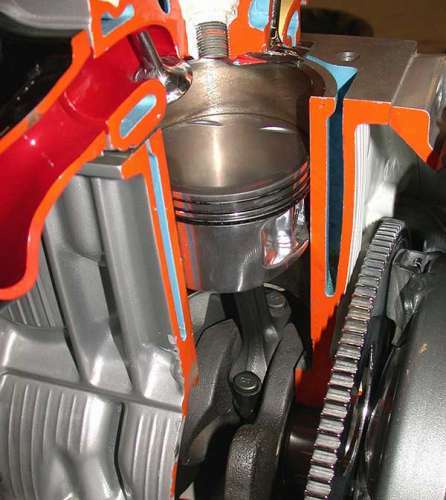
OHV Six-Cylinder Engine vs. Flathead V8
The first generation F-Series truck started in 1948. Known as the Bonus Built truck since this was the first time in Ford’s history that the truck had its own platform build.
Ford made a lot of money in the 1930s and 1940s on the durability and ruggedness of their flathead V8 engine. It was used in the first-generation F-Series trucks until 1952. Ford phased in a new V8 engine into this first-generation truck, but they also introduced a six-cylinder flathead engine.
Later, there was an L-Head six cylinder that was an overhead valve engine (OHV) that had a higher compression ratio than the V8 and also made more power with a rating of 100 hp at 3,800 rpm and 178 lb.-ft. of torque. Some refer to this engine as the Rogue engine as it was nicknamed after the factory is was built in.
By the end of the first-generation life cycle, the total output of the six-cylinder OHV made 101 hp and 185 lb.-ft. of torque.
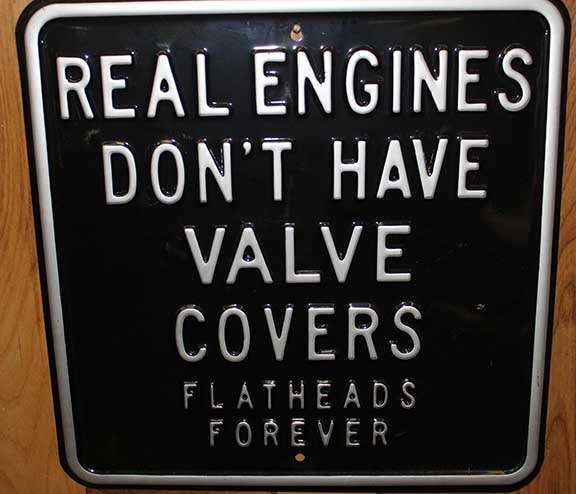
End of the Ford Flathead Engine
As Ford introduced the second-generation F-Series, they also finally retired the flathead V8. In doing so, they introduced a completely new 239 cubic inch Y-block OHV 8-cylinder engine. This engine was nicknamed the Power King engine and it helped propel Ford’s truck sales during the 1950s.
Ford still had the six-cylinder OHV engine too. Both of these engines, with only a few minor tweaks carried over from the second-generation F-Series into the third generation and carried through the entire 1950s, 1960s and even into the 1970s.
Windsor and Cleveland V8 Engines
A major change in the sixth-generation F-Series was the addition of more V8 power. This is likely where the V8 mentality of today started since there were seven engine options for the F-Series in the 1970s, with different V8 variants.
The two most popular V8 engines of this era were the Windsor and Cleveland engines.
The Ford Windsor V8 was named after the manufacturing plant (in Windsor, Ontario) was a 221 cubic-inch V8 engine that actually began production in 1961 and was so good, it would last until 2001. Talk about a stalwart engine in Ford’s engineering history!
The Cleveland series of V8s is named after the plant it was manufactured in. Although similar in many regards to the Windsor V8 it had many distinctive features too including smaller spark plugs and free breathing valve heads.
The Cleveland engine was marketed as a high-performance engine, which was a new concept for Ford trucks. Additionally the 460 cubic-inch Lima engine would exceed 200 horsepower during this time to earn that reputation.
During the 1980s, the engine displacement was changed to liters from cubic inches, so the Cleveland engines was available as a 5.8-liter, 6.6-liter and 7.5-l.iter.
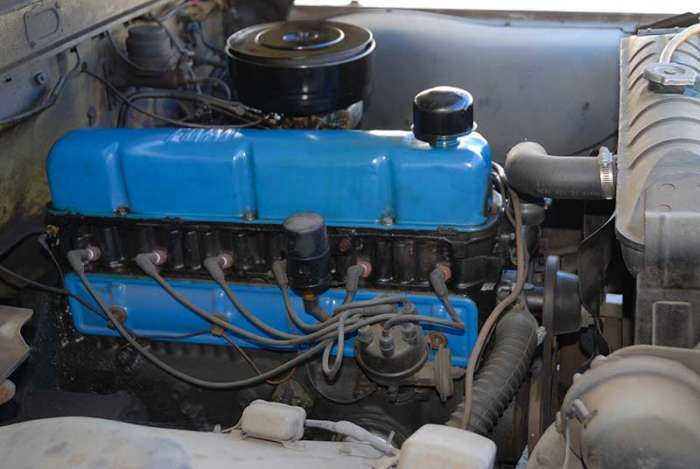
V6 engines help with fuel economy
Just as the Cleveland and Windsor V8s gained popularity and the “trucks must be V8” mindset was further dug in, the fuel crisis hit and the 4.9-liter six cylinder, equipped with a carburetor was a popular option to rival the V8 engines.
Throughout most of the 1980s and the seventh-generation F-150, the V8s continued to dominate in sales choices.
When Ford became the first automaker to offer a non-carbureted engine, thanks to fuel injection, the 4.9 liter became more popular for the eight generation.
Fuel injection would be added to the v8 engines, and to the diesel engines (hello PowerStroke) as the V8 and Diesels continued to be the most popular choices over the six-cylinder engines. This trend continued through the better part of the 2000s until the revolutionary change of the twelfth generation.
Ecoboost was a game changer
Really, the mentality that V8 was better than a six-cylinder was hard to argue against up until 2009. Then Ford introduced Ecoboost technology.
When Ford’s engineers came up with the idea to combine gasoline direct injection and turbocharging to create efficient and powerful engines, it changed the pickup truck segment.
The new 3.5-liter V6 EcoBoost engine introduced as part of the twelfth generation F-Series really changed things for Ford. It did take some convincing of the truck consumer and some great marketing to showcase its merits. But most importantly, this fuel-efficient V6 was vital to the strict CAFE standards that existed as part of tight government regulations.
It allowed Ford to continue make trucks without the worry of government fines or penalties. In many ways, the fans of the V8 engines owe a lot to the Ecoboost to allow Ford to continue to sell and market both options to the consumer.
That’s the ironic part. In many ways, today’s V8 truck that is popular with old-school consumers is still around thanks to the existence of the Ecoboost V6.
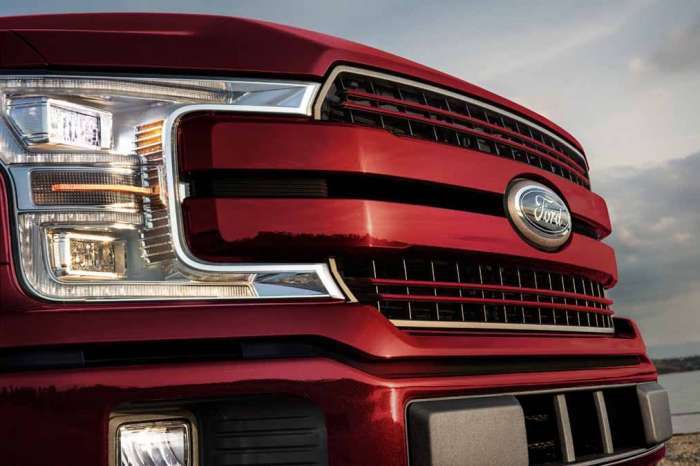
So, there you have a quick history of six-cylinder versus V8 as it relates to the Ford F-Series. I’m not proclaiming one better than another. I am refuting that close-minded mentality that a pickup truck must have V8 in order to be powerful. That’s simply not true and the output numbers don’t lie, and neither do the sales numbers. Ecoboost F-150s continue to be the most-popular choice for the average truck buyer.
Please don’t send any hate mail to me, but I do want to hear your thoughts on V8 vs. V6. Which do you prefer and why? Leave me a comment.
Jimmy Dinsmore has been an automotive journalist for more than a decade and been a writer since the high school. His Driver’s Side column features new car reviews and runs in several newspapers throughout the country. He is also co-author of the book “Mustang by Design” and “Ford Trucks: A Unique Look at the Technical History of America’s Most Popular Truck”. Also, Jimmy works in the social media marketing world for a Canadian automotive training aid manufacturing company. Follow Jimmy on Facebook, Twitter, at his special Ford F-150 coverage on Twitter and LinkedIn. You can read the most of Jimmy's stories by searching Torque News Ford for daily Ford vehicle report.


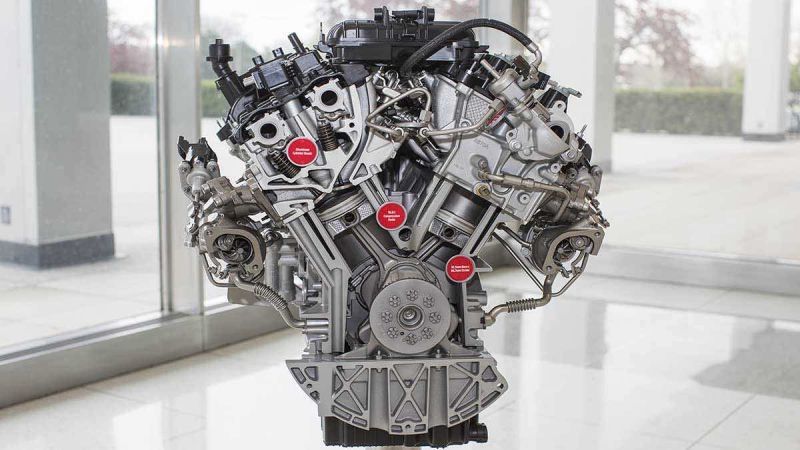










Comments
The 300 cubic inch inline 6
Permalink
The 300 cubic inch inline 6 was also a great engine. I drove one for years.
A steady performer for sure!
Permalink
In reply to The 300 cubic inch inline 6 by Phil (not verified)
A steady performer for sure!
The 4.9L that the writer
Permalink
In reply to The 300 cubic inch inline 6 by Phil (not verified)
The 4.9L that the writer mentions is the 300ci.
My 1992 Ford is a 300 i6 with
Permalink
In reply to The 300 cubic inch inline 6 by Phil (not verified)
My 1992 Ford is a 300 i6 with a Manuel. The more I drive it,the more I love it. Beats a big V8 and it's easy to keep running.
Ford should go back to the
Permalink
Ford should go back to the inline 6 with manual tranny for a work truck. I don't want a Cadillac or Lincoln equipped pickup truck. You buy a pickup truck for just that...to use it for a work vehicle. I'd be interested in a Diesel inline 6 as well.
I agree, along with manual
Permalink
In reply to Ford should go back to the by Tom Watterson (not verified)
I agree, along with manual windows and a basic radio. Just makes sense for working.
You do know that you can buy
Permalink
In reply to I agree, along with manual by Jason Makowski (not verified)
You do know that you can buy an F-150 XL with manual windows, vinyl seats, basic radio, etc, right? But, you never see them outside a work area. Why? Because people generally don't want to drive such a truck every day. They realized long ago that they didn't have to give up convenience or even luxury appointments in their daily driver to get the capability they needed.
For reference, Im under 40, and I daily drive (by choice) a 1974 Chevrolet Custom 10 pickup with an Inline 6 engine, manual transmission, manual brakes, manual steering, manual windows, manual locks.
That's my work truck now. And
Permalink
In reply to Ford should go back to the by Tom Watterson (not verified)
That's my work truck now. And I intend to keep itbb
Clearly Ford is doing
Permalink
In reply to Ford should go back to the by Tom Watterson (not verified)
Clearly Ford is doing everything wrong with the modern F-150, which is why it sells so poorly, and for no profit whatsoever.
Ya skip right over the Essex
Permalink
Ya skip right over the Essex V-6 of the late 1990s/00s, but refer to the old 300 as a V-6 in the tagline above it. It most certainly was an Inline 6. If you don't know the difference, why are you writing this article? Maybe some research would help next time.
I've got a 2003 F150 that I
Permalink
I've got a 2003 F150 that I purchased right off the trailer with 2 miles on her. 18 years and 170, 000 miles later I've done absolutely little to this 4.2
6 cylinder. Tires, battery, better muffler. Thats it.
Hell, I just replaced the spark plugs and a few wires after 168,000 miles just because....
This trucks been paid off for 13 years. I seriously think I can easily obtain another 150k with this power plant. Oil & filter ever 6k. Not bad for a six cylinder.
I think one of the main
Permalink
I think one of the main reasons that the Ford straight six engines are so tough is that they have seven main bearings on the cranksht.
Lots of mistakes in the 1950s
Permalink
Lots of mistakes in the 1950s engine-history.
I don't have time to list them all.
Why no mention of the 4.2
Permalink
Why no mention of the 4.2 Essex v6? Good read either way I've always been a v6 f150 guy never into the v8's. Currently driving a 3.7L f150